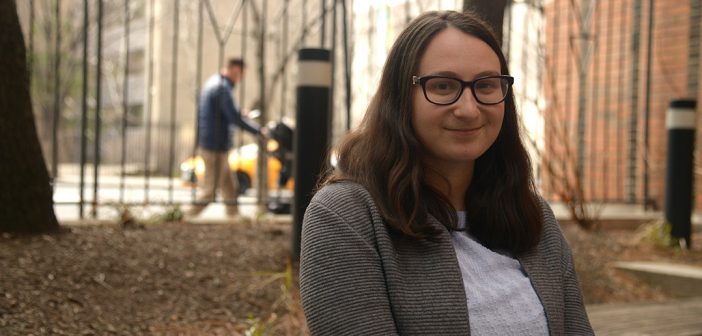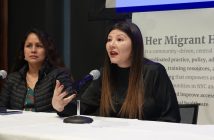It’s challenging enough to face the fact that your gender identity is not aligned with the identity you were assigned when you were born.
In a new study, Fordham Graduate School of Education (GSE) doctoral student Hannah Sugarman and GSE professor Eric C. Chen, Ph.D., detail how much harder it can be when you’re a teenager.
In “Transgender Students’ Navigation of Gender Identity and Relationships in High School: A Phenomenological Analysis,” Sugarman interviewed three adults between 18 and 23, about how they navigated their transgender identity through the context of their relationships and high school experiences. The study, which took place in 2016 and 2017, involved two women who’d transitioned from being men and one man who’d transitioned from being a woman. All attended high schools in the New York City metro area and transitioned after they’d graduated.
Sugarman and Chen utilized a phenomenological qualitative method, which focuses on understanding a relatively small group of individuals’ own subjective experience, through the prism of the researchers’ professional and personal views. That is, both the participant and the researcher engage in the collaborative process of constructing layers of meanings underlying the phenomenon through in-depth personal interviews.
“The interviewer may have some ideas about what it means to be a transgender individual, but it’s through the process of having a dialogue with the participant that they eventually understand what it means to be transgender, and what it means to negotiate that hidden identity with others,” Chen said.
The study revealed that participants were dealing with five notable issues: early inclinations of transgender identity; denial of gender identity; school-related barriers to self-acceptance; emotional support impacting resilience; and taking on a queer identity.
Chen, whose research focuses on marginalized members of society, said that for him, the last theme was the most intriguing. Participants first identified as either gay, lesbian, or bisexual before realizing that these new labels are not sufficient.
“Transgender individuals, at least based on these participants’ experiences, seem to have a three-stage process,” Chen said. “They seem to pick up different labels to describe their own gender identity, experiment with it, and then realize, again consciously or unconsciously, that it doesn’t fit with their own transgender identity.”
Other findings that emerged from the interviews point to changes that can be made at the high school level. For instance, all three said they understood when they were very young that their psychological identity did not match their biological one. Like many in the LGTBQ community, they initially responded to this revelation with avoidance and hostility.
School administrators and teachers were sources of further tension, through policies, such as single gender bathrooms, or through the language they used.
“One [participant]indicated that she would cut school, because her teacher kept referring to her as a man. It was a source of constant stress for her,” said Chen.
On a positive side, all three participants said they were able to find adults or peers during their high school years who they could reach out to for emotional support. Those people may not have been aware of the students’ transgender identity, but because they were encouraging and empathetic, students felt OK with reaching out for comfort and found it beneficial.
The paper will form the basis of Sugarman’s doctoral dissertation. She and Chen will present their findings at the American Educational Research Association’s annual meeting, which takes place April 13 to 17 in New York.
“I have seen the impact that educated, compassionate, and empathetic adults can make on a student’s life, and my goal is to raise and showcase the voices of transgender individuals so that school personnel will be further suited to be that source of support,” Sugarman said.
“My sincere hope is that my research will contribute to the existing literature on transgender adolescents, and that my presentation will perhaps spark some interest in future research and understanding of this vulnerable community.”



